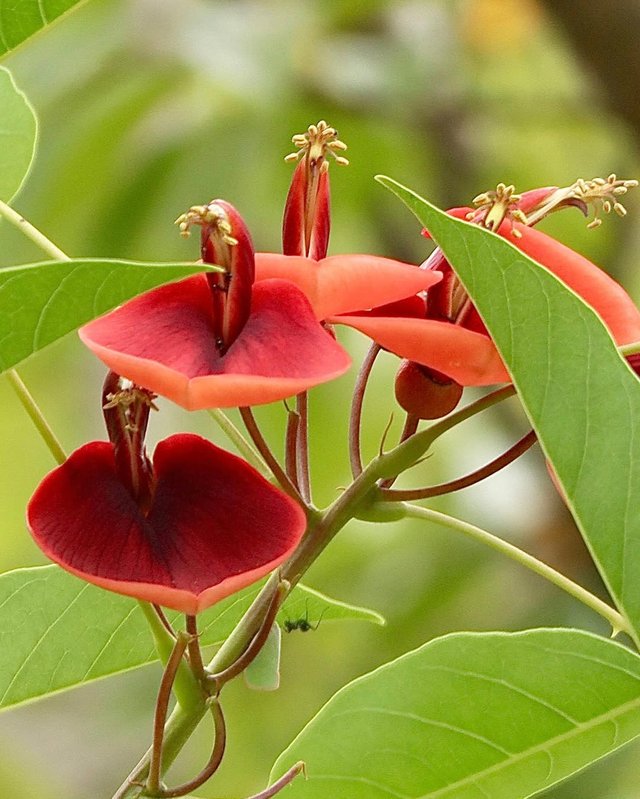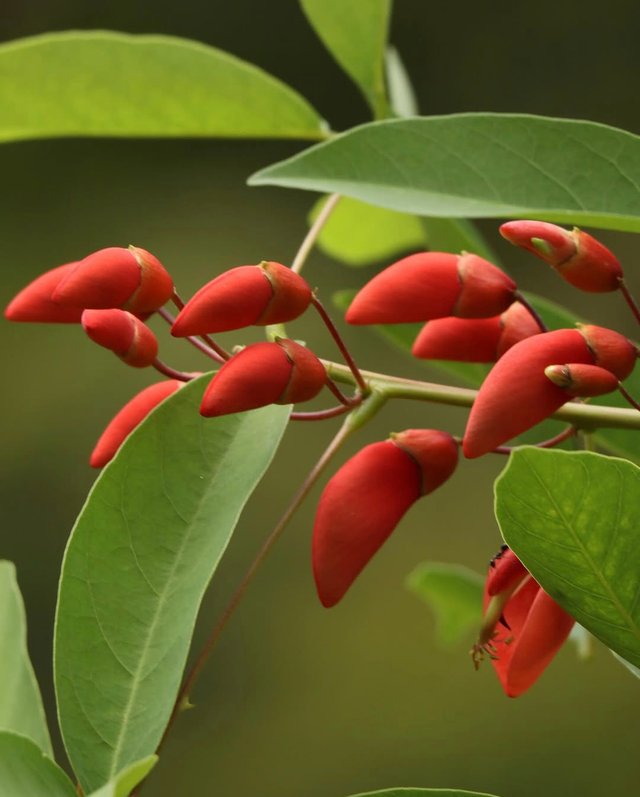Erythrina crista-galli Flower
Erythrina crista-galli, commonly known as the cockspur coral tree or ceibo, is a striking flowering plant.It is the national flower of Argentina and Uruguay and holds deep cultural and symbolic significance in those regions, often representing strength, resilience, and national pride. This plant belongs to the Fabaceae family, the same family as peas and beans, and is known for its distinctive leguminous characteristics. Erythrina crista-galli grows as a small to medium-sized tree or large shrub, reaching heights of around 5 to 10 meters, though in favorable climates it can sometimes grow taller. Its growth habit is somewhat irregular with twisting, gnarled branches and a broad, spreading crown, giving it an eye-catching sculptural appearance. The leaves are trifoliate, composed of three oval to lance-shaped leaflets with a glossy green surface, providing a lush backdrop for the brilliantly colored flowers.
The most striking feature of the plant is undoubtedly its inflorescence, which consists of clusters of large, deep crimson to scarlet flowers shaped like elongated pea blossoms with curved petals resembling a rooster’s spur, hence the name "crista-galli," which means “cock’s comb” in Latin. These flowers appear from late spring through summer and sometimes into early autumn, creating a vivid display that attracts bees, butterflies, and hummingbirds, making it ecologically important as a nectar source. Following the flowering season, the tree produces seed pods that are elongated, cylindrical, and brown, containing several dark seeds typical of legumes.
Erythrina crista-galli thrives best in warm temperate to subtropical regions, preferring full sun exposure and fertile, well-drained soils, though it tolerates poorer soils and even seasonal flooding, which makes it a resilient species for riverbanks and lowland areas. It is somewhat frost-sensitive but can withstand short periods of cold, and in harsher climates, it may die back to the ground in winter and re-sprout in spring. Propagation is usually done through seeds or semi-hardwood cuttings, and the plant establishes fairly quickly. It is often cultivated as an ornamental in gardens, parks, and public landscapes because of its decorative flowers and unusual form. Pruning is recommended to maintain shape and encourage abundant flowering.



